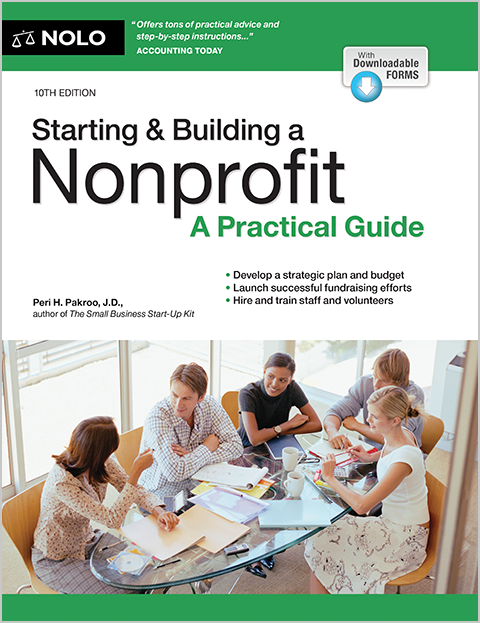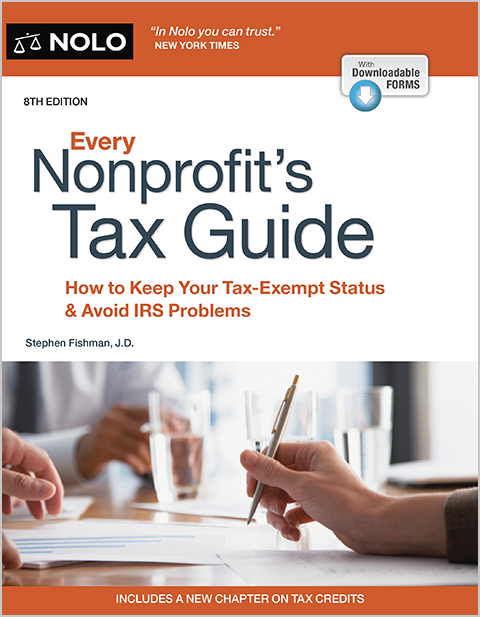Find out what you need to do to obtain a small business license in New Jersey.
Here is an overview of the main steps you will need to take to close down your New Jersey nonprofit corporation. This article only covers the most basic kind of voluntary dissolution of a typical New Jersey 501(c)(3) nonprofit corporation that's already doing business. There are different rules and procedures for other types of nonprofits and for other situations such as an involuntary dissolution.
Authorizing Dissolution
New Jersey's Nonprofit Corporation Act ("NCA") provides for voluntary dissolution through:
- unanimous written consent of members
- action by the board and a vote by the members; or
- if there are no members, a vote by the board.
If your nonprofit does not have members, it is up to the board to approve dissolution at a board meeting. At least two-thirds of the trustees must vote for dissolution. The trustees will need to sign a certificate of dissolution and prepare a plan of dissolution.
If your nonprofit has members, it can be dissolved if all members provide their written consent. All members must sign a certificate of dissolution and adopt a plan of dissolution. A nonprofit with members can also dissolve through action by the board and then by the members. The board first must adopt a resolution to dissolve and a plan of dissolution and submit it to the members for a vote. The default rule is that a two-thirds majority of the members is required to approve the dissolution; however, your certificate of incorporation or bylaws may require a greater or lesser majority for approval.
The NCA also allows for the possibility that your certificate of incorporation has its own provisions for dissolution. You should review your certificate of incorporation for any dissolution provisions.
Make sure to properly record any board resolution, the plan of dissolution, the trustees' votes, and, where necessary, the members' votes. You'll need this information for filings with the state and the IRS.
Plan of Dissolution
Regardless of which method you use to approve dissolution, you'll need to prepare a plan of dissolution. The plan must lay out how the nonprofit will discharge its liabilities and distribute any remaining assets in compliance with its tax-exempt status. You include the plan as part of your certificate of dissolution that you'll file with the Treasury Department's Division of Revenue ("DOR"). You may want to have an attorney assist you in drafting the plan of dissolution.
Certificate of Dissolution
After your board or members have approved the dissolution, you must file a certificate of dissolution with the DOR. The certificate must contain:
- the name of your nonprofit
- the name of your nonprofit's registered agent and the location of its registered office
- the name and address of each of your nonprofit's officers and trustees
- your plan of dissolution
- a statement that your nonprofit has voluntarily elected to dissolve
- the manner in which dissolution was authorized
- a statement regarding how your nonprofit's liabilities have been discharged or how your liabilities have been adequately provided for or fairly applied to liabilities
- a statement regarding the specific approval received (including votes and date and place of meeting, if applicable) or action taken to dissolve the nonprofit
- a statement that the plan of dissolution and the distribution of assets has been approved by the Superior Court or by a governmental body or officer (if required).
The DOR has one blank form for the certificate of dissolution (Form C-159B) available on its website. However, this form may not include all the information required by the DOR for your particular dissolution. You should check with the DOR for more information, and, if necessary, have a lawyer draft your certificate of dissolution.
You must file the certificate of dissolution, including your plan of dissolution, in triplicate. The filing fee is $75. The DOR will forward a copy of your certificate of dissolution to the Attorney General.
"Winding Up"
After your nonprofit has formally authorized dissolution, it continues to exist only for the purpose of taking care of certain final matters that, collectively, are known as "winding up" the company. Winding up is largely about paying off any debts and then distributing any remaining assets, but there may also be other tasks involved. It may be appropriate to designate one or more officers or directors to handle these matters.
Generally speaking, you can only distribute money and property after you have paid off all of your nonprofit's debts. When it comes to distributions, the NCA has specific rules you need to follow. For example, your nonprofit must return any items that were loaned to it on the condition that they would be returned upon dissolution. In addition, after paying off debts and returning loaned assets, a dissolving 501(c)(3) organization must distribute its remaining assets for tax-exempt purposes. In practice, this usually means distributing assets to one or more other 501(c)(3) organizations. Other distribution rules, contained in your articles of incorporation, bylaws, or a plan of distribution, may also apply. If you have any questions, you should consult with a lawyer.
Notice to Creditors and Other Claimants
One other part of winding up your dissolved nonprofit involves giving notice to creditors and other claimants. Under the NCA, giving notice is optional, and involves both publishing a notice in a newspaper once per week for three consecutive weeks and mailing a copy of the notice to each known creditor. There are a variety of rules covering such things as what must be contained in the notice, how and when a notice must be mailed, and how to handle claims that may be made in response to the notice. Some of these rules can be hard to understand. Therefore, when dealing with giving notice, you should strongly consider getting assistance from a business attorney.
Federal Tax Note
For federal tax purposes, you'll need to file IRS Form 990 or IRS Form 990-EZ. You must include a completed Schedule N (Liquidation, Termination, Dissolution, or Significant Disposition of Assets), as well as copies of your articles of dissolution, resolution to dissolve, and plan of dissolution. When completing Form 990 or Form 990-EZ, you'll need to check the "Terminated" box in the header area on Page 1 of the return. For additional, more specific guidance, check out Every Nonprofit's Tax Guide, by Stephen Fishman (Nolo), go to the IRS website, or consult with a tax professional.
Certain Matters are Unchanged by Dissolution
Dissolution alone does not:
- subject the nonprofit's trustees or officers to greater standards of conduct than applied before dissolution
- transfer title to the nonprofit's assets
- change quorum or voting requirements for the nonprofit's board or members
- change provisions regarding election, appointment, resignation, or removal of trustees or officers
- change provisions for amending or repealing bylaws
- make transferrable memberships non-transferrable
- prevent the corporation from suing or being sued in its corporate name, whether in judicial, administrative, or other actions; or
- abate a legal action brought against the corporation prior to dissolution.
Additional Information
You can find additional information, such as forms, mailing addresses, phone numbers, and filing fees, on the DOR website.
Dissolving and winding up your nonprofit corporation is only one piece of the process of closing your organization. For further, general guidance on many of the other steps involved, check Nolo's 20-point checklist for closing a business and the Nolo article on what you need to know about closing a business.



